- Fisher’s Top 500 Final Rankings
- Fisher’s Top 400 for May
- Fisher’s Top 350 for April
- Fisher’s Top 300 for March
- Fisher’s Top 217 for February
- Fisher’s Top 217 for January
- Fisher’s Top 186 for December
- Fisher’s Top 186 for November
- Fisher’s Top 124 for October
- Fisher’s Top 124 Preseason Rankings
My final rankings have been published for a couple weeks now and I’m still happy with them, which isn’t always the case. Sometimes my order changes from one day to the next — within tiers and particularly among my first-round contenders this year — but I’ve remained surprisingly content with the finished product, considering the difficult decisions I had to make down the stretch and right down to the wire.
Finalizing the order for those first-round contenders — from 21 to 45 — certainly kept me up at night. I lost sleep over those decisions and some of the last-minute shuffling that took place within that tier in order to feel fully satisfied. Several of those prospects felt interchangeable throughout the draft year, but I’m confident in the order that I settled on to stand the test of time.
The fallers from my final rankings for the 2020 NHL Draft include the three prospects that slipped out of my first round — my top 31 — through no fault of their own, along with four skilled Europeans that I wound up a little lower on, two Americans at opposite ends of the size spectrum that were part of The Program’s letdown from last year, and an OHL centre that left a lot to be desired during his draft year.
RELATED: 10 Risers from Fisher’s Final Rankings
1) Mavrik Bourque (RC, Canada, Shawinigan QMJHL)
MAY RANKING: 21
FINAL RANKING: 33
VARIATION: -12
ANALYSIS: Bourque’s fall appears much bigger than it was, I can assure you of that. I’m still a big fan of his game — some will knock his pace, but I appreciate Bourque’s ability to slow the game down and still produce at his desired pace (Leon Draisaitl, the NHL’s leading scorer, does that too) — but when it came to finalizing my rankings, Bourque was one of the players that I was comfortable with bumping down. He had been part of a five-player QMJHL block (19-23) that I knew I wanted to break up and Bourque was always going to be the odd-man out amongst that group in my mind — the first to fall, per se. I had that feeling that I was a tad too high on Bourque and I hinted that he could be a faller of sorts during a Draft Debaters podcast, noting Bourque (then 21) was closer to Jacob Perreault (then 39) than to Seth Jarvis (18) based on my tiering (9-20, 21-45). In the end, Bourque (33) and Perreault (34) wound up grouped together, which felt right for me. They were in the same tier all along and it’s not like Bourque fell out of that tier of first-round contenders (21-45). So this fall looks much worse than it really is. Yes, Bourque is down 12 spots and no longer in my first-round range, but he was only overtaken by five forwards: J.J. Peterka (26), Alexander Pashin (27), Brendan Brisson (28), Tyson Foerster (29) and Martin Chromiak (32). I prefer those five, but Bourque is right there at 33 — just seven spots separate those six forwards, within the same tier. Alas, there is very little separation and, as mentioned, I needed to make difficult decisions — nothing against Bourque.
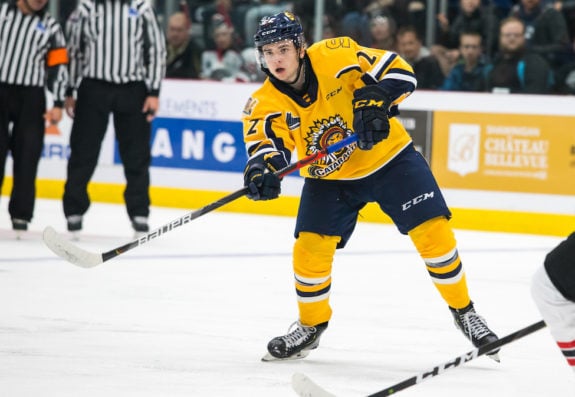
2) Martin Chromiak (LW, Slovakia, Kingston OHL)
MAY RANKING: 29
FINAL RANKING: 32
VARIATION: -3
ANALYSIS: It pained me to take Chromiak out of my first round, especially since I had him as a first-rounder in my preseason rankings (25) and his stock only went up from there — soaring in the second half when he arrived in the OHL, making an immediate impact in North America alongside Shane Wright. Not to mention Chromiak is one of the younger prospects in this draft class as an August birthdate — one day younger than Quinton Byfield and perhaps just scratching the surface of his offensive potential. Chromiak could be the next David Pastrnak and he is still a first-round talent in my mind. Chromiak was only overtaken by Brisson and Foerster amongst forwards in slipping three spots to the top of my second round. Not much of a fall at all, but notable because he wound up outside my first round. Like Bourque, Chromiak is still right there with Brisson and Foerster, who were among my biggest risers. I considered holding Brisson back with Bourque in order to keep Chromiak up in the first round with Foerster, but Brisson won out on the day my rankings were finalized and I don’t regret that (yet).
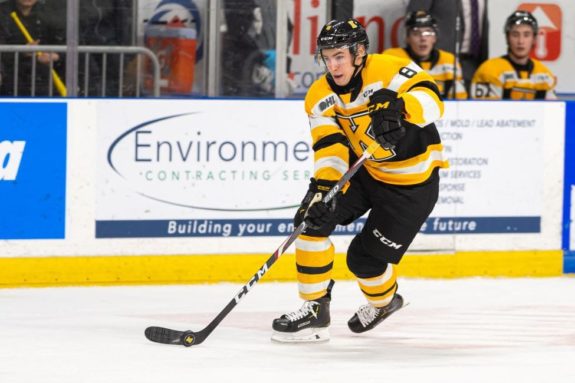
3) Vasily Ponomarev (LC, Russia, Shawinigan QMJHL)
MAY RANKING: 31
FINAL RANKING: 36
VARIATION: -5
ANALYSIS: I liked Ponomarev as a first-rounder too — I really did — but he was the easiest of the three to slide into the second round. Easier than Chromiak and Bourque. Ponomarev could make me regret saying that since he has the potential to explode as a sophomore in the QMJHL next season. He didn’t light it up in league play as a newcomer to North America but shone on the international stage for Russia during his draft year. The talent and tools are very evident with the eye test and Ponomarev is only going to get better. I slid him behind Perreault and Thomas Bordeleau for my final rankings, which could be regrettable by this time next year and when those three are in their NHL prime. I could also regret being lower on the other Russian centre Marat Khusnutdinov, who slipped from 36 to 40 for my final rankings. I really like him too and contemplated grouping Khusnutdinov with Ponomarev at 36-37, in either order, but I wanted to keep the Swedish defencemen in my thirties — both Emil Andrae (38) and Helge Grans (39) — and I’ve always had love for Kasper Simontaival (37). So Khusnutdinov also slid a little as a result, but that is another testament to how tight those first-round contenders (21-45) are at the top of my second round. Both Ponomarev and Khusnutdinov are first-round talents and could prove to be steals outside the top 31. And, no, I had nothing against Shawinigan in general, with both Bourque and Ponomarev falling as Cataractes teammates.
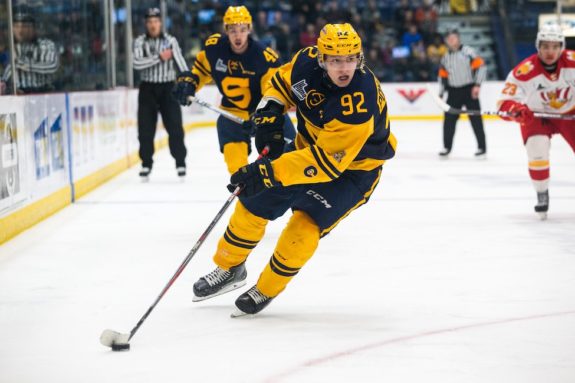
4) Zion Nybeck (RW, Sweden, HV71 J20)
MAY RANKING: 32
FINAL RANKING: 41
VARIATION: -9
ANALYSIS: Nybeck enjoyed a record-setting season in Sweden’s junior league and has all the offensive ability in the world, but he is small and not overly explosive in his skating, so I do have slight concerns over how his game will translate to pro and to North America in particular. Nybeck was another prospect that I felt comfortable bumping down within my tier of first-round contenders. To be honest, I didn’t love him in my viewings — particularly at the Hlinka Gretzky Cup to start the draft year. Nybeck underwhelmed me throughout that tournament — including Sweden’s semifinal loss to Canada — and perhaps I caught the wrong games from his league play because I wasn’t blown away there either, but I’ve seen the highlight reel and it’s obviously impressive. Nybeck looks like a first-rounder in those highlights and the stat-line suggests the same, so I could regret ranking him outside the top 40.
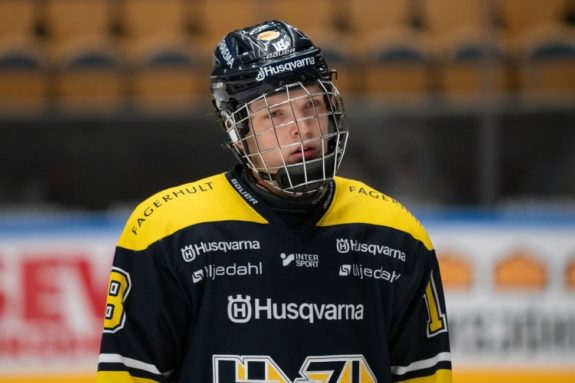
5) Lukas Reichel (LW/RW, Germany, Berlin DEL)
MAY RANKING: 35
FINAL RANKING: 43
VARIATION: -8
ANALYSIS: I’m not as high on Reichel as others in the scouting community — he strikes me as more of a complementary player than a catalyst like fellow Germans Tim Stutzle and J.J. Peterka. Reichel is a pretty distant third among those three in my eyes. There is a big gap between Stutzle (3) and Peterka (26) but also quite a bit of separation between Peterka (26) and Reichel (43) despite being in the same tier. The more I watched those two, the more Peterka pulled away. Reichel is more subtle and not as flashy in his attacking style, but he does have traits that should translate well to North America. Still, I don’t envision him becoming an impact player in the NHL — I envision a complementary middle-six winger — and thus Reichel wound up near the bottom of my first-round contenders.
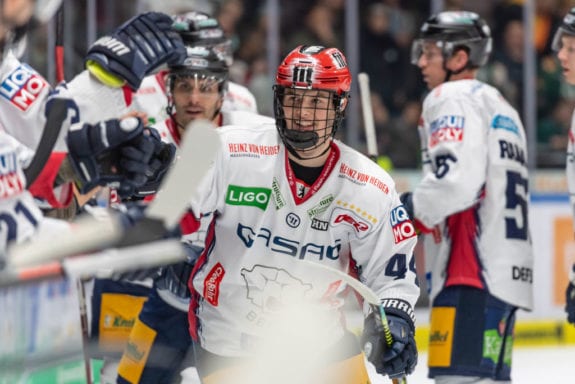
6) Jean-Luc Foudy (RC, Canada, Windsor OHL)
MAY RANKING: 51
FINAL RANKING: 63
VARIATION: -12
ANALYSIS: I gave Foudy the benefit of the doubt as a first-round contender for as long as possible but, in the end, he just didn’t earn his spot in that tier. For me, Foudy fell into the second-round candidates (46-80) as the first prospect in my third round. That is a large tier and Foudy could go anywhere in that range, though some teams might still be higher on him — and willing to reach for him in the top 50 — because of his great bloodlines and blazing speed. However, a lack of finish and suspect hockey sense from a playmaking perspective has me questioning Foudy’s future. He had an inconsistent and mediocre draft year, but I was keeping Foudy among my first-round contenders based on his strengths and how they project to pro. Ultimately, those weaknesses were the reason he dropped down a tier for my final rankings — not a lack of draft-year production.
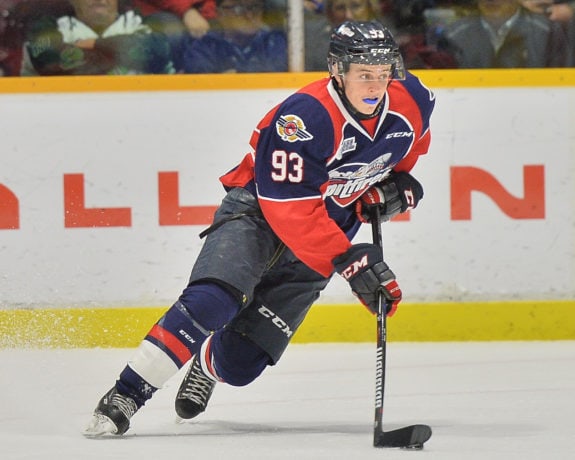
7) Eemil Viro (LD, Finland, TPS Liiga)
MAY RANKING: 57
FINAL RANKING: 71
VARIATION: -14
ANALYSIS: I’m not a huge fan of the Finnish defence crop for 2020 — besides Joni Jurmo, who became one of my boys this year and rose into my first round — with only nine in my draft range (top 217) and 16 in my top 500. Viro is still my third-best Finnish defender — behind Jurmo (30) and Topi Niemela (52) — but I see Viro as more of a third-round talent among those second-round candidates (46-80). Viro is a nice player but nothing special in the present. There is room to grow into something more special for the future and further grow his offensive game, but Viro played it safe in the Liiga during his draft year, which hindered his stock to some degree — at least in my evaluation for the final rankings.
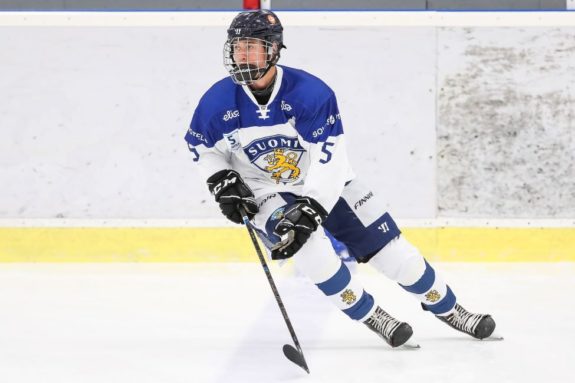
8) Tyler Kleven (LD, USA, NTDP U18)
MAY RANKING: 67
FINAL RANKING: 76
VARIATION: -9
ANALYSIS: Kleven is a polarizing prospect as a physical specimen who could become a shutdown beast. He is quite raw and could be a late-bloomer, having only played high-level hockey for the past couple seasons as part of The Program. Kleven has the size and possesses some unique elements, including his physicality as arguably the best hitter in this draft class, but his puck skills remain a work in progress. The modern-day defenceman has to be able to move the puck efficiently and with mobility when need be. Kleven is a pretty powerful skater — kind of like Brandon Carlo — but his vision and poise aren’t on that level yet. His decision making with the puck in all three zones is questionable at times and that can be difficult to teach no matter where he is in his development. I think that will continue to be a challenge for Kleven as a pro — projecting him more along the lines of Roman Polak. Still serviceable, but not worth a top-50 pick. That said, some teams could see top-four potential and perhaps have Kleven in their first round — in their top 31 — for the uniqueness that he offers in the big picture.
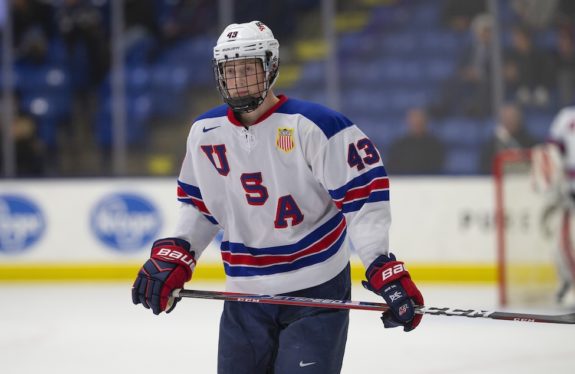
9) Brett Berard (LW, USA, NTDP U18)
MAY RANKING: 68
FINAL RANKING: 77
VARIATION: -9
ANALYSIS: Berard is another candidate to outperform his draft position if he winds up going in the third round. He is small — listed at 5-foot-9, though younger brother Brady is already 5-foot-11 — but Berard’s September birthdate suggests a lot of room for growth on and off the ice as one of the youngest prospects in this draft class. He had a stellar draft year on the ice, finishing third in scoring for The Program with a relatively impressive 34 points in 41 games and a balanced stat-line with 16 goals and 18 assists. He tied for the second-most goals behind 2021 prospect Matt Benier’s 18. It wasn’t a high-scoring team — certainly not in comparison to that record-smashing 2019 draft class, led by Cole Caufield’s 72 goals — but Berard worked his way into a prominent role and outproduced some of his more highly touted teammates such as Ty Smilanic, Luke Tuch and Dylan Peterson. Points aren’t everything and size is a factor that can’t be ignored with Berard, but I bumped him down simply because I’m higher on the four European forwards in front of him — three Swedes in Daniel Ljungman (72), Emil Heineman (73) and Daniel Torgersson (74), plus little Russian Dmitri Ovchinnikov (75). Despite the fall, Berard is still among my second-round candidates (46-80) and his Sept. 9 birthday could bode well for his draft stock.
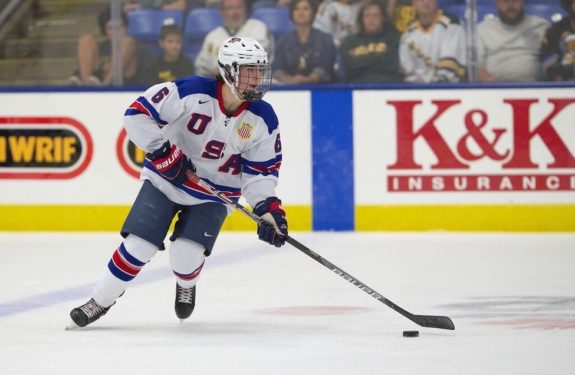
10) Samuel Knazko (LD, Slovakia, TPS U20)
MAY RANKING: 73
FINAL RANKING: 82
VARIATION: -9
ANALYSIS: Knazko took a nice step statistically in Finland’s junior league — jumping from two goals and 17 points to seven goals and 28 points in one fewer game this season — but he didn’t quite get to the level that I anticipated in ranking him as a second-rounder (43) to start the draft year. When I published those preseason rankings, I was hoping to get live viewings of Knazko with WHL Vancouver, who selected him in the first round of last year’s CHL import draft, but perhaps he’ll make his way overseas for next season. I’d like to see Knazko try his hand at major junior and I still think his skill-set could thrive on this side of the pond. Knazko is another young prospect for this draft class, with an August birthdate, so his upside remains promising among my potential third-rounders (81-97). There is some swagger in Knazko’s game that projects a fairly high ceiling as a two-way defender capable of contributing offensively.
Honourable Mentions
NOTE: Here are 11 more double-digit fallers from within my top five rounds.
Charlie Desroches (RD, Canada, Saint John QMJHL)
MAY RANKING: 96
FINAL RANKING: 143
VARIATION: -47
Jacob Dion (LD, Canada, Drummondville QMJHL)
MAY RANKING: 97
FINAL RANKING: 144
VARIATION: -47
NOTE: Dion had a dynamite draft year statistically — with 17 goals and 51 points in 63 games as a defenceman — but I was too high on him and Desroches throughout in retrospect. They were hanging around the top of the fourth round when similar defenders from the other CHL leagues were slotted for the fifth round, so I made that adjustment for my final rankings.
Jacob Truscott (LD, USA, NTDP U18)
MAY RANKING: 117
FINAL RANKING: 133
VARIATION: -16
Colby Ambrosio (RC, Canada, Tri-City USHL)
MAY RANKING: 128
FINAL RANKING: 147
VARIATION: -19
NOTE: Ambrosio was an accidental faller due to shuffling. I do like him with Brady Burns (146), stylistically, but both of them should have been closer to 120 than 150 in hindsight.
Mathieu De St. Phalle (RW, USA, Chicago USHL, overager)
MAY RANKING: 132
FINAL RANKING: 181
VARIATION: -49
Nikolai Mayorov (LW, Russia, Cedar Rapids USHL, overager)
MAY RANKING: 133
FINAL RANKING: 180
VARIATION: -47
Egor Smirnov (RD, Russia, Dynamo Moskva MHL)
MAY RANKING: 135
FINAL RANKING: 172
VARIATION: -37
Sergei Safin-Tregubov (LD, Russia/Portugal, Tolpar Ufa MHL)
MAY RANKING: 136
FINAL RANKING: 171
VARIATION: -35
Leo Loof (LD, Sweden, Farjestad J20)
MAY RANKING: 139
FINAL RANKING: 173
VARIATION: -34
NOTE: Loof would be my second mulligan, if I could have another besides Ambrosio. Loof would have stayed in my top 150 and probably just stayed put with fellow Swedish defender Hugo Styf (136) and American import Victor Mancini (137). To move Loof back up, I’d make room by dropping Patrick Guay (145) out of the fifth round — perhaps grouping him with Burns’ Saint John teammate Josh Lawrence (190) as sixth- or seventh-rounders.
Lucas Ramberg (LD, Sweden, Lulea SHL)
MAY RANKING: 140
FINAL RANKING: 174
VARIATION: -34
Jack Smith (LC, USA, St. Cloud Cathedral U.S. High School)
MAY RANKING: 152
FINAL RANKING: 183
VARIATION: -31
Get the latest NHL Draft & Prospect rankings, news and analysis